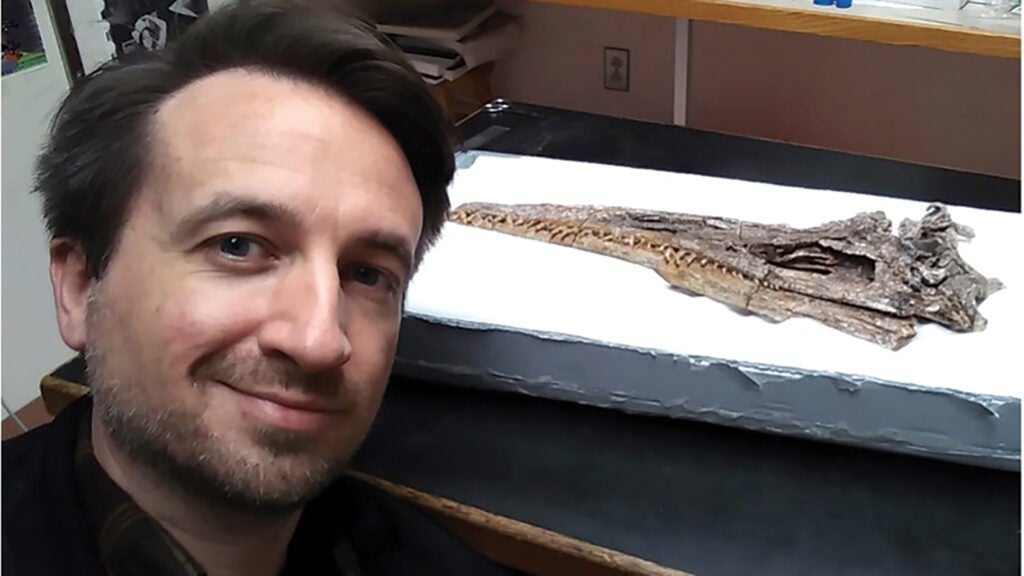Marshall paleontologists identify new ancient marine predator
Published 12:00 am Tuesday, February 6, 2024

- Robert O. Clark of Marshall University’s Department of Biological Sciences, along with colleagues have unveiled knowledge of a new species of plesiosaur, Unktaheela specta. (Submitted photo)
HUNTINGTON, W.Va. — Research conducted by Robert O. Clark of Marshall University’s Department of Biological Sciences and colleagues from Marshall unveils a new species of plesiosaur, Unktaheela specta. Their findings, published this week in Cretaceous Research introduce a polycotylid plesiosaur that hunted the inland seas of the North American Midwest 80 million years ago.
Clark, academic laboratory manager for the Department of Biological Sciences, conducted the research with Professor F. Robin O’Keefe and graduate student Sara E. Slack. The team’s findings have brought clarity to aspects of the plesiosaur family tree, revealing a newly recognized subgroup they named Dolichorhynchia, as well as the need to reclassify two polycotylids formerly considered species of Dolichorhynchops. The researchers recognized these plesiosaurs as distinct genera, naming them Martinectes and Scalamagnus.
“For years, which polycotylids were more closely related to which has been really tough for paleontologists to figure out,” Clark said. “Unktaheela is exciting because it’s given us a better understanding of these relationships.”
Unktaheela was a fast-swimming, short-necked plesiosaur, with an elongated snout and numerous pointed teeth. At only 7.5 feet long, Unktaheela is the smallest known polycotylid and features large eyes and a wide skull. The skull bears striking similarities to those of predatory birds, with forward-angled eyes for binocular vision, a narrow snout affording a clear forward view, and a large, flat, bony ledge over each eye. This feature may have shaded Unktaheela’s eyes as it hunted just beneath the water’s surface. Unktaheela patrolled the Western Interior Seaway alongside mosasaurs, sea turtles, sharks, and ammonites.
The name Unktaheela pays homage to the keen-eyed, horned water serpent of Native American Lakota lore, reflecting the plesiosaur’s distinct visual adaptations. Fossils of the new genus were unearthed in the Late Cretaceous Sharon Springs Formation of Wyoming and South Dakota.
To read the paper online, visit https://doi.org/10.1016/j.cretres.2023.105812.
To learn more about Marshall’s Department of Biological Sciences, visit https://www.marshall.edu/biology/.





